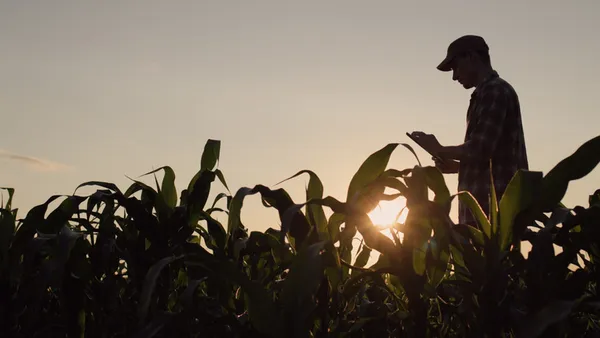As the bird flu spreads, farmers should follow recent guidance from the Centers for Disease Control and Prevention to safeguard their workers. However, one expert tells Agriculture Dive that the recommendations aren’t a one-size-fits-all solution.
Interim guidance from the CDC recommends farms take a host of steps to reduce workers' infection and exposure to the virus, including the distribution of personal protection equipment. In a recent update posted April 26, the agency said farms should consult with a supervisor or worker safety team to determine how best to apply CDC recommendations.
“I wish they would have bolded that," said Jeff Bender, a professor and director of the Upper Midwest Agricultural Safety and Health Center at the University of Minnesota. "Because if you look at those recommendations, what is going to be applicable or practical or tailored needs to be done for each individual dairy, because they’re very different or can be very different.”
Some of what the agency recommends, such as aprons, gloves, boots and eye protection, mirrors what several operators have been doing, Bender said. Arguably the most important piece for dairy workers to keep in mind is face protection, especially when employees' heads are close to udders.
“Keeping things from splashing into your face is probably really the guidance that I would give, especially those that are working in the milking parlor,” said Bender, whose organization is funded by the CDC’s National Institute for Occupational Safety and Health.
Federal agencies have upped their response to the bird flu outbreak by offering payments for dairy farms that provide face masks, and are making other assistance available to producers to monitor farms and implement biosecurity measures.
Some of the guidance is going to be difficult to implement, because many farmers and agricultural leaders want a practical approach to the virus, Bender said.
“Wearing N95 masks probably isn’t going to float,” he said. “One, because they just don’t have access to them…the other is the practicality of wearing that kind of mask in a hot, humid environment.”
In addition to face protection, the CDC recommends workers to wash their hands when they put on or remove their protective equipment, as well as showering at the end of each shift and leaving all contaminated garb at work. The agency also encourages self-monitoring for symptoms for 10 days after working around potentially infected animals.
Still, there are other types of work happening at dairies besides milking, which is why farms should tailor their plans to individual operations, Bender said. Workers could take care of calves or perform machinery work, which may require different approaches to biosecurity.
“Those different tasks need to be looked at,” he said. “What are the risks associated with them and what precautions need to be taken.”











